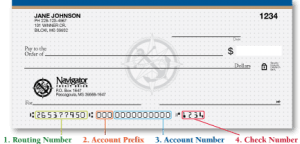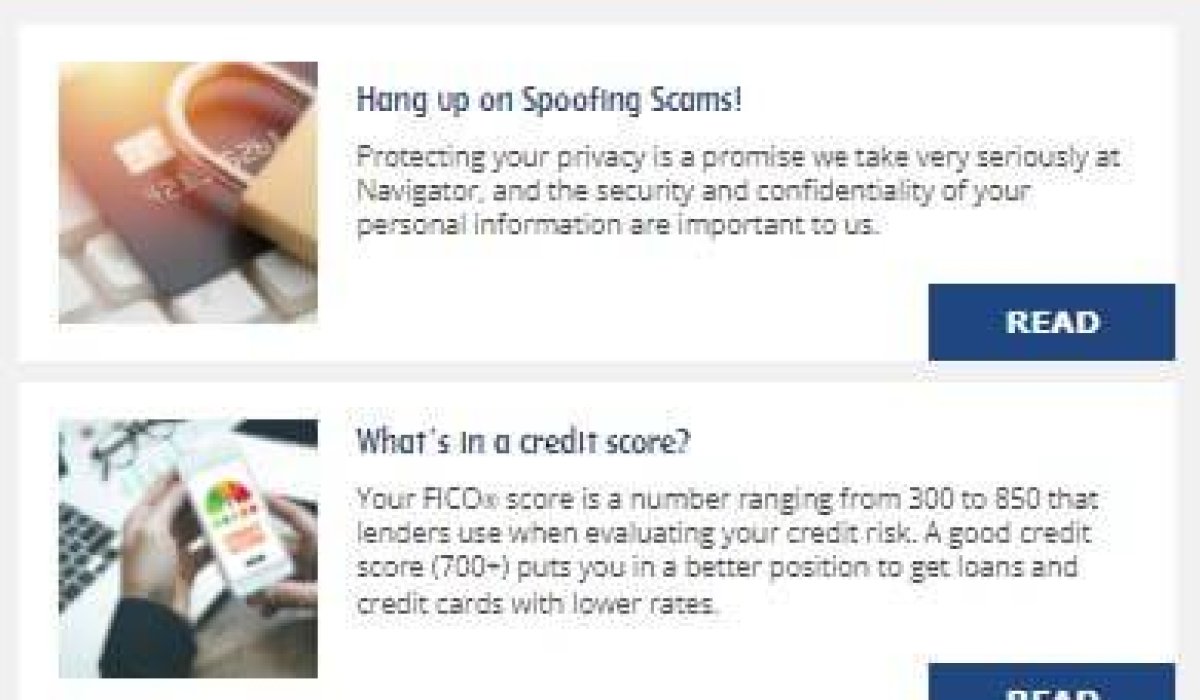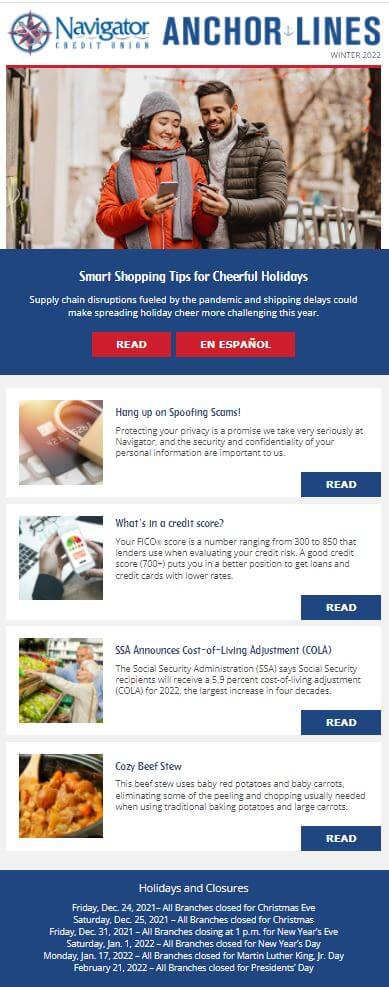

Real-Time Fraud Alerts for Your Safety and Convenience
Navigator Credit Union strives to make your debit and credit cards safe and secure. As part of our promise to protect your privacy, we offer free fraud text alerts giving you the ability to immediately respond to any suspicious activity detected on your account(s).
How does fraud alert messaging work?
Our Fraud Department monitors your card activity to identify transactions that may not be within your usual patterns. If we suspect a transaction may be fraud, we will mark that transaction for verification. Our Fraud Department will then text you with details of the transaction. That text will come from the Navigator Credit Union Fraud Department text number 37268.
Receiving a text does not mean the transaction in question is fraudulent, only that Navigator wants to make sure you made the charge. If you reply to the text that you recognize the transaction(s), your card will remain available for use.
If you reply to the text that you do not recognize the transaction(s), you will receive a text response asking you to call our Fraud Department at 877-253-8964 to report the fraudulent transaction(s). A block will be placed on your card to protect you from further fraudulent transactions until you call us.
If you do not reply to the text, a pre-recorded voice call may be attempted at your mobile device and the home phone number listed on your account.
If you receive a pre-recorded call, please listen to the prompts provided; you'll be asked to review and respond to the validity of each transaction that is presented during the call. To reply to the pre-recorded message left on your phone, please call the number provided in the message to tell us whether or not you recognize the transaction(s).
Members are encouraged to save the Navigator Fraud Department's text number, 37268, so you'll know it's Navigator sending you the message.
How much does it cost to use this service?
There is no fee to use the service. However, standard text message and data rates assessed by your mobile carrier do apply. Please check with your mobile carrier to ensure that you have text messaging enabled on your mobile phone plan.
Is this service safe and secure?
Yes. Navigator will never ask for your account number, personal identification or other personal information via a text message. If you ever receive a text message asking for your member number, account number or other personal information, please do not respond.
How do I register for SMS/Text Fraud Alerts?
Members with a valid mobile number on file are automatically registered for free fraud text alerts. Be sure to keep your phone number and address updated on your Navigator account so can be contacted in the event of suspicious activity.
Here are some more ways you can prevent becoming a victim of fraud:
- Monitor transactions on your account with ease by utilizing Navigator’s digital banking services including our mobile app.
- Be sure to set up e-Alerts to notify you instantly by text or email of select activity on your account.
- Let Navigator know of any travel plans. We can make sure your credit and/or debit card are noted for out-of-town use.
Remember, if any fraudulent charges occur on your account, Navigator is here to help. You can visit any Branch or call our Member Contact Center at 800-344-3281 during regular business hours (Monday – Friday, 9 a.m. – 5 p.m.; Saturday, 9 a.m. – 1 p.m.) to dispute any charges.
.

 Home
Home








